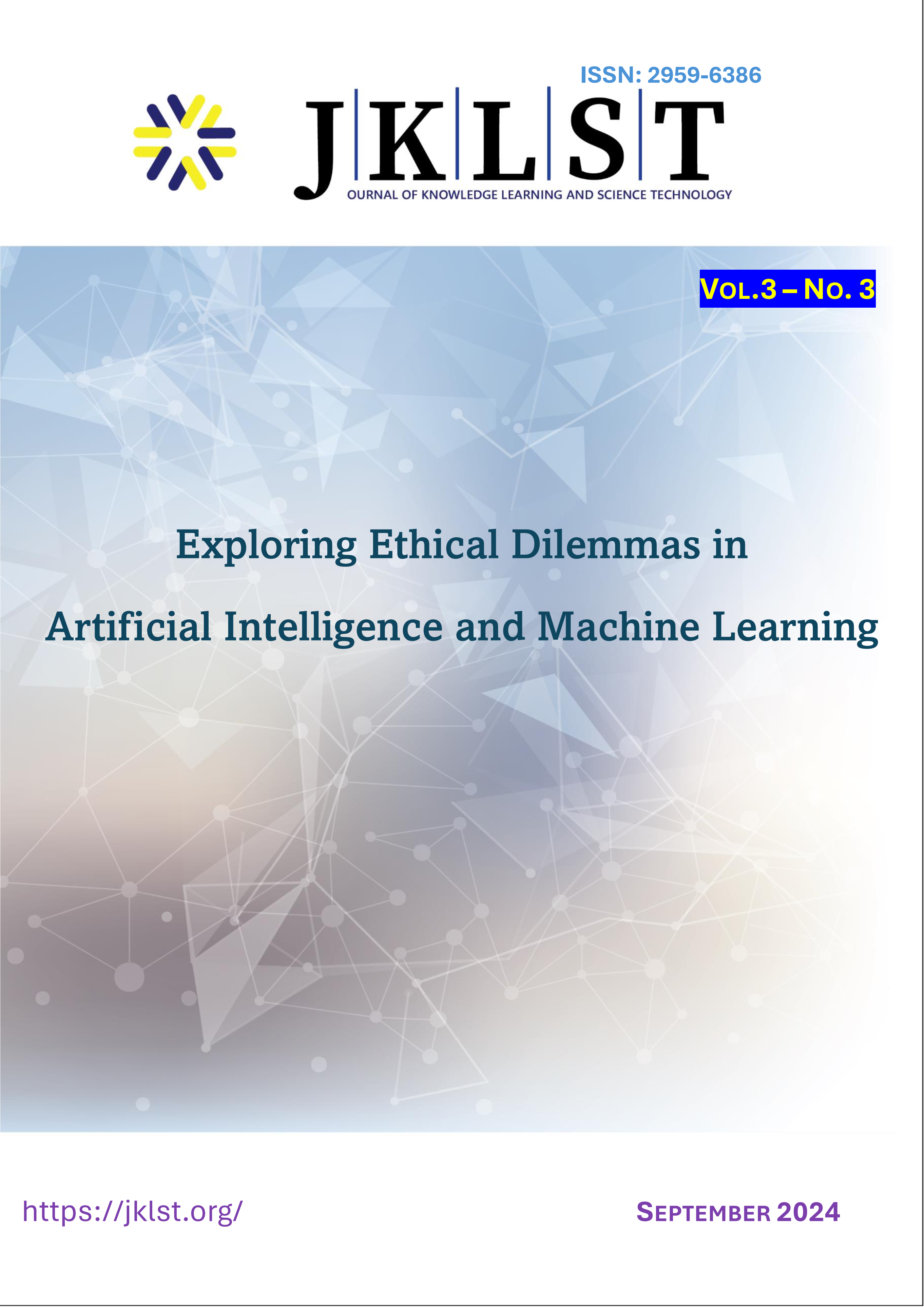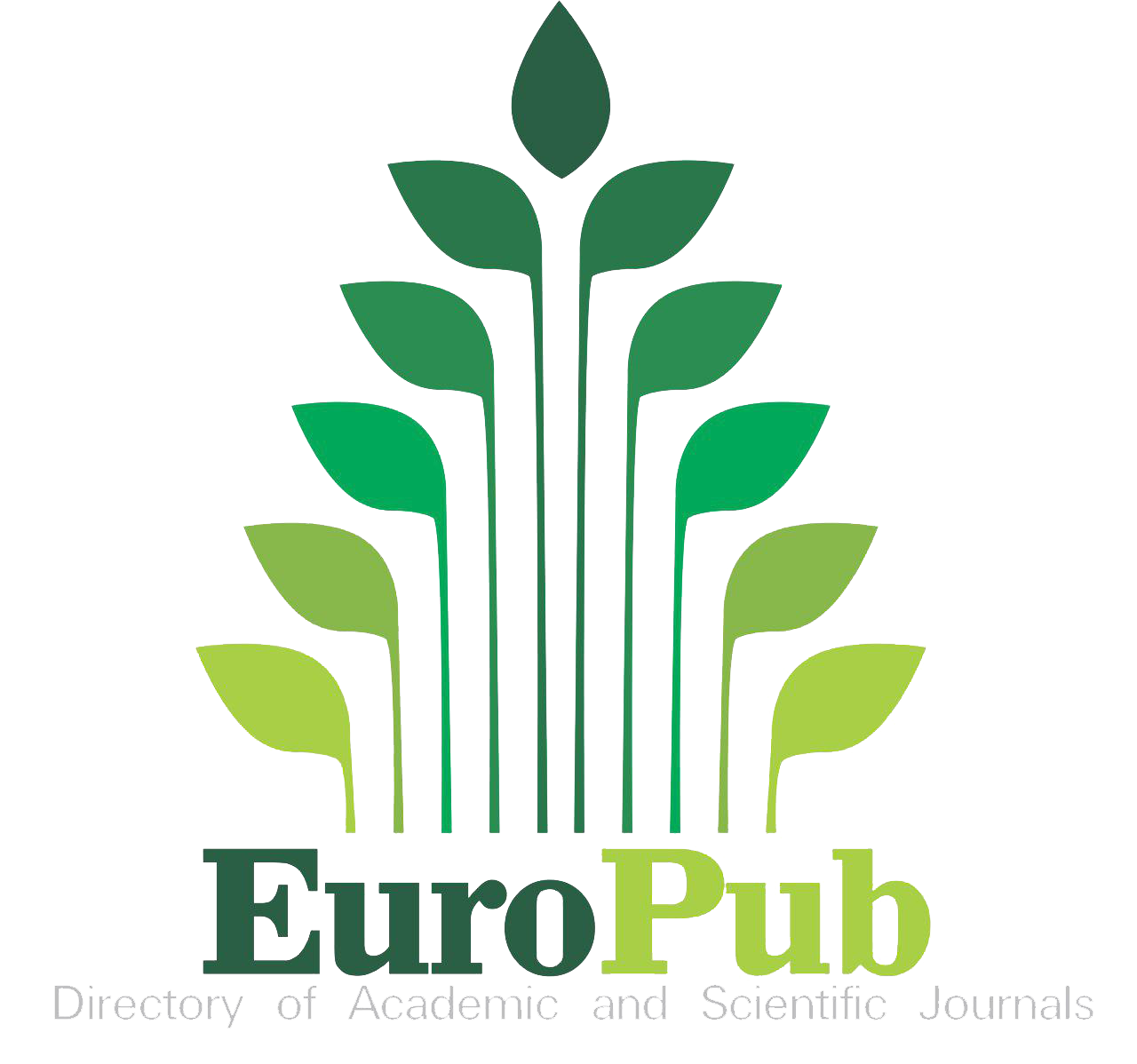A SYSTEMATIC REVIEW OF THE EFFECTIVENESS OF TURMERIC IN THE TREATMENT OF BREAST CANCER
DOI:
https://doi.org/10.60087/jklst.vol3.n3.p.305-325Abstract
Breast cancer remains a significant global health concern, necessitating the exploration of innovative therapeutic strategies. Curcumin, a bioactive compound derived from turmeric, has garnered considerable attention due to its diverse pharmacological properties, including anticancer effects. However, the clinical translation of curcumin is hampered by its poor bioavailability. Nanoformulations of curcumin, particularly Cur-NPs, offer a promising solution to this challenge by enhancing drug solubility, stability, and targeted delivery. This in-depth abstract delves into the potential of Cur-NPs as a therapeutic approach for breast cancer treatment. The systematic review included in vivo studies investigating the efficacy and toxicity of Cur-NPs in breast cancer models. Notably, Cur-NPs demonstrated significant antitumoral activity across diverse breast cancer models, attributed to mechanisms such as apoptosis induction, inhibition of proliferation, and suppression of angiogenesis. Moreover, Cur-NPs exhibited minimal toxicity, with no or low adverse effects observed in terms of body weight, organ histopathology, and hematological/biochemical parameters. Characterization of Cur-NPs revealed a diverse array of nanoparticle types, including polymer NPs, micelles, lipid-based NPs, and metal NPs. Poly(ethylene glycol) chains were commonly incorporated into NP compositions, enhancing their biocompatibility and circulation time. Targeting moieties such as folic acid and hyaluronic acid further augmented the specificity of drug delivery to breast cancer cells. Experimental design varied among studies, encompassing different animal models, routes of administration, and treatment durations. Intravenous administration emerged as the predominant route, although alternative routes such as intraperitoneal and intratumoral administration were also explored. The onset of treatment protocols varied based on days after tumour induction or tumour volume, with curcumin doses ranging from 2 to 100 mg/kg and administered with varying frequencies. In conclusion, Cur-NPs represent a promising therapeutic approach for breast cancer treatment, offering enhanced efficacy and safety profiles compared to free curcumin. Further research is warranted to optimize Cur-NP formulations and elucidate their clinical potential in breast cancer patients. The review also identified a diverse array of nanoparticle formulations employed in breast cancer therapy, including liposomes, polymeric nanoparticles, micelles, and dendrimers. These nanoparticles were engineered to encapsulate various anticancer drugs, including chemotherapeutic agents, molecularly targeted therapies, and immunomodulators, with the aim of enhancing their efficacy and reducing systemic toxicity. Targeted drug delivery strategies were employed to selectively deliver therapeutic agents to tumour cells while sparing healthy tissues, thereby minimizing off-target effects and improving treatment outcomes. Preclinical studies provided compelling evidence of the efficacy of nanoparticle-based therapies in inhibiting tumour growth, suppressing metastasis, and overcoming drug resistance in breast cancer models. Nanoparticles demonstrated superior pharmacokinetic properties, enhanced bioavailability, and controlled drug release kinetics, leading to improved therapeutic efficacy compared to conventional formulations. Furthermore, nanoparticle-based therapies exhibited synergistic effects when combined with traditional chemotherapy agents, leading to enhanced antitumor activity and reduced treatment resistance. Clinical studies evaluating the safety and efficacy of nanoparticle-based therapies in breast cancer patients demonstrated promising results, with favourable tolerability profiles and encouraging preliminary efficacy outcomes. However, challenges remain in translating preclinical findings into clinical practice, including issues related to scalability, manufacturing, and regulatory approval. Additionally, further research is needed to optimize nanoparticle formulations, tailor treatment strategies to individual patient profiles, and elucidate long-term safety and efficacy outcomes.
Downloads
References
Anand, P. N. (2010). Design of curcumin-loaded PLGA nanoparticles formulation with enhanced cellular uptake, and increased bioactivity in vitro and superior bioavailability in vivo. . Biochemical Pharmacology, 79(3), 330-338.
Anemone A, C. L. (2019). Imaging tumor acidosis: a survey of the available techniques for mapping in vivo tumor pH. Cancer Metastasis Rev, 25-49.
Bansal, S. S. (2011). Advanced drug delivery systems of curcumin for cancer chemoprevention. Cancer Prevention Research, 4(8), 1158-1171.
Blanco, E. S. (2015). Principles of nanoparticle design for overcoming biological barriers to drug delivery. Nature Biotechnology, 33(9), 941-951.
Britt, K. C. (2020). Key steps for effective breast cancer prevention. Nature Reviews Cancer, 20(8), pp.417-436.
Candido, K. K. (2017). New cancer pain treatment options. Current pain and headache reports, 21, pp.1-12.
Chew, H. (2001). Adjuvant therapy for breast cancer: who should get what? Western Journal of medicine, p.284.
Cleeland, C. (2000). Cancer-related symptoms. Seminars in radiation oncology, pp. 175-190.
de Oliveira Filho, J. d. (2021). Bioactive compounds of turmeric (Curcuma longa L.). Bioactive compounds in underutilized vegetables and legumes, pp.297-318.
Doello, K. O. (2018). Latest in vitro and in vivo assay, clinical trials and patents in cancer treatment using curcumin: a literature review. Nutrition and cancer, 70(4), pp.569-578.
Dreaden, E. C.-S.-S. (2012). Nano-targeted cancer therapy: Moving beyond delivery. ournal of Controlled Release, 168(2), 182-193.
Duan, J. M. (2013). Reversion of multidrug resistance by co-encapsulation of doxorubicin and curcumin in chitosan/poly (butyl cyanoacrylate) nanoparticles. . International Journal of Pharmaceutics, 454(1), 153-160.
Garcia, E. &. (2018). Recent advances in nanoparticle-based therapies for breast cancer. In Proceedings of the International Conference on Nanotechnology in Medicine, 45-50.
Ghosh, M. S. (2009). Curcumin nanodisks: Formulation and characterization. Nanomedicine: Nanotechnology. Biology and Medicine, 5(4), 567-577.
Greish K, P. V. (2018). Curcumin–copper complex nanoparticles for the management of triple-negative breast cancer. Nanomaterials, 2-8.
Hesketh, R. (2023). Introduction to cancer biology. Cambridge: Cambridge University Press.
Hua WF, F. Y. (2010). Curcumin induces down-regulation of EZH2 expression through the MAPK pathway in MDA-MB-435 human breast cancer cells. Eur J Pharmacol , 16-21.
Huang C, C. F. (2020). 99mTc radiolabeled HA/TPGS-based curcumin-loaded nanoparticle for breast cancer synergistic theranostics: Design, in vitro and in vivo evaluation. Int J Nanomedicine, 100-250.
Irvin Jr, W. M. (2011). Symptom management in metastatic breast cancer. The oncologist, 16(9), pp.1203-1214.
Kelsey, J. a. (1988). Breast cancer epidemiology. Cancer research, 48(20), pp.5615-5623.
Kocaadam, B. a. (2017). Curcumin, an active component of turmeric (Curcuma longa), and its effects on health. Critical reviews in food science and nutrition, 57(13), pp.2889-2895.
Lazebnik, Y. (2010). What are the hallmarks of cancer? Nature Reviews Cancer, 10(4), pp.232-233.
Li, C. U. (2005). Clinical characteristics of different histologic types of breast cancer. British journal of cancer, 93(9), pp.1046-1052.
Li, L. B. (2005). Liposome-encapsulated curcumin: In vitro and in vivo effects on proliferation, apoptosis, signaling, and angiogenesis. Cancer, 104(6), 1322-1331.
Lin M, T. L. (2016). Curcumin-guided nanotherapy: a lipid-based nanomedicine for targeted drug delivery in breast cancer therapy. Drug Deliv, 1000-1060.
Lv, Z. L. (2014). Curcumin induces apoptosis in breast cancer cells and inhibits tumor growth in vitro and in vivo. International journal of clinical and experimental pathology, 7(6), p.2818.
Maeda, H. N. (2013). The EPR effect for macromolecular drug delivery to solid tumors: Improvement of tumor uptake, lowering of systemic toxicity, and distinct tumor imaging in vivo. . Advanced Drug Delivery Reviews, 65(1), 71-79.
Maman, S. a. (2018). A history of exploring cancer in context. Nature Reviews Cancer, 18(6), pp.359-376.
Marine, J. D. (2020). Non-genetic mechanisms of therapeutic resistance in cancer. Nature Reviews Cancer, 20(12), pp.743-756.
Mukerjee A, R. A. (2016). Targeted Nanocurcumin Therapy Using Annexin A2 Anitbody Improves Tumor Accumulation and Therapeutic Efficacy Against Highly Metastatic Breast Cancer. J Biomed Nanotechnol , 2016-2240.
Mukhopadhyay R, S. R. (2020). Gemcitabine Co-Encapsulated with Curcumin in Folate Decorated PLGA Nanoparticles; a Novel Approach to Treat Breast Adenocarcinoma. Pharm Res, 1007-1109.
Nersesyan, H. a. (2007). Current aproach to cancer pain management: Availability and implications of different treatment options. Therapeutics and clinical risk management, pp.381-400.
Peart, O. (2015). Breast intervention and breast cancer treatment options. Radiologic technology, 86(5), pp.535M-558M.
Pinto, A. a. (2011). Improving quality of life after breast cancer: dealing with symptoms. Maturitas, 70(4), pp.343-348.
Reuter S, E. S. (2008). Modulation of anti-apoptotic and survival pathways by curcumin as a strategy to induce apoptosis in cancer cells. Biochem Pharmacol, 10-100.
Saberi-Karimian M, K. N. (2019). Vascular endothelial growth factor: An important molecular target of curcumin. Crit Rev Food Sci Nutr, 299-312.
Shang, H. C. (2016). Curcumin causes DNA damage and affects associated protein expression in HeLa human cervical cancer cells. Oncology reports, 36(4), pp.2207-2215.
Simental-Mendía LE, C. M. (2017). Impact of curcumin on the regulation of microRNAs in colorectal cancer. Expert Rev Gastroenterol Hepatol , 99-101.
Smith, J. &. (2020). Nanoparticle-based drug delivery systems for breast cancer therapy: Current status and future perspectives. Journal of Nanomedicine, 15(3), 210-225.
Thangapazham, R. L. (2008). Evaluation of a nanotechnology-based carrier for delivery of curcumin in prostate cancer cells. International Journal of Oncology, 32(5), 1119-1123.
Wang, Y. Y. (2016). Curcumin in treating breast cancer: A review. Journal of laboratory automation, 21(6), pp.723-731.
Warburg, O. (1956). On the origin of cancer cells. Science, pp.309-314.
Weinberg, R. (1996). How cancer arises. Scientific American, pp.62-70.
Whitaker, K. (2020). Earlier diagnosis: the importance of cancer symptoms. The Lancet Oncology, 21(1), pp.6-8.
Wilhelm, S. T. (2016). Analysis of nanoparticle delivery to tumours. Nature Reviews Materials, 1(5), 16014.
Yallapu, M. M. (2012). Curcumin nanoformulations: A future nanomedicine for cancer. Drug Discovery Today, 17(1-2), 71-80.
Zhang J, X. Z. (2017). Nanosuspension drug delivery system: preparation, characterization, postproduction processing, dosage form, and application. In:. Nanostructures for Drug Delivery, 41-53.
Zhao, Z. L. (2015). Biodegradable nano-platform constructed from poly (ethylene glycol) (PEG)-block-poly (lactic acid) (PLA) and poly (ethyleneimine) (PEI) for efficient in vitro gene delivery. ACS Applied Materials & Interfaces, 7(9), 5577-5586.
Downloads
Published
Issue
Section
License
Copyright (c) 2024 Journal of Knowledge Learning and Science Technology ISSN: 2959-6386 (online)

This work is licensed under a Creative Commons Attribution 4.0 International License.
©2024 All rights reserved by the respective authors and JKLST.









